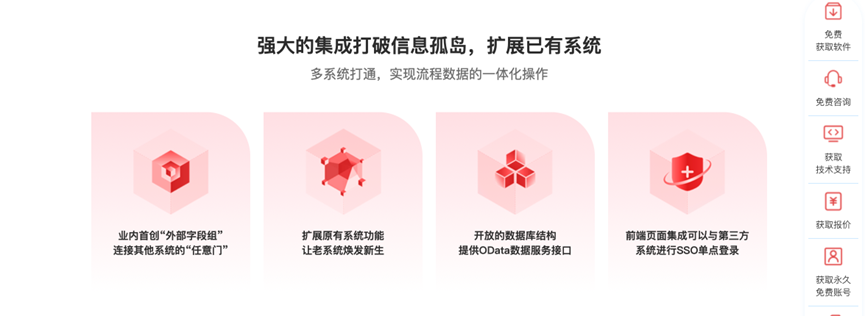Introduction


Since the 18th National Congress of the Communist Party, with the continuous changes in the domestic and international environment, China has set two phases of carbon emission reduction targets: to achieve “carbon peak” by 2030 and “carbon neutrality” by 2060. The “dual carbon” goals have had a profound impact on economic and social development, especially in the energy sector. Taking the power industry as an example, driven by the “3060” targets, China’s installed capacity and electricity generation from non-hydropower renewable energy will grow rapidly. Therefore, during the 14th Five-Year Plan, the power industry needs to accelerate the construction of a power system that adapts to a high proportion of renewable energy, relying on digital technologies to promote the intelligent integration of power generation, grid, and users, forming an efficient, scientific, and interactive energy internet.
In the wave of digital transformation in the energy sector, many energy companies have begun their digital exploration and have achieved significant results. A state-owned power generation group in the Yangtze River Delta is one such typical case; this energy company is responsible for the construction, management, and development of the power grid in its province and city, aiming to optimize the local allocation of electricity resources. However, the current business system cannot quickly generate the required reports and summaries, leading to reliance on Excel for manual reporting and data aggregation, which is not only inefficient but also prone to errors, adding extra workload. Sharing data directly in spreadsheet software also poses risks of data leakage and security vulnerabilities. Additionally, traditional reports cannot reflect the operational status and consumption of energy equipment in real-time, thus affecting the accuracy and timeliness of business decisions.
Initially, the company tried using a certain reporting software available in the market, but the results were not as expected. Due to the high difficulty of report development and the requirement for developers to master SQL for data processing, the learning and maintenance costs were high. To address these challenges, the company decided to introduce a configurable digital platform developed by a software company in Beijing—Magic Cube Network Report, establishing a personalized digital system, significantly improving management efficiency while ensuring the security and controllability of the enterprise information system.
Coincidentally, many energy companies, such as Dongfang Electric Group, Qinshan Nuclear Power Station, Hangzhou Jiangdong Fuli Da Thermal Power Co., Ltd., Shanghai Electric Station Equipment Co., Ltd., Changjiang Nuclear Power Station, Heilongjiang Electric Power Co., Ltd. Maintenance Company, Shenhua Guohua (Beijing) Electric Power Research Institute Co., Ltd., Shenhua Shendong Coal Group Co., Ltd., have also adopted the Magic Cube Network Report configurable platform. Among them, Dongfang Electric Group chose Magic Cube Network Report to build a digital logistics management scenario, while Qinshan Nuclear Power Station built an integrated management system based on Magic Cube Network Report, processing all non-online data online, using it as a rapid development platform for the enterprise, enabling quick construction of personalized application scenarios internally.
So, what outstanding features does this configurable digital platform have that has garnered the favor of so many energy companies?

1
Configurable Platform with High Customization and Flexibility
As a configurable platform, it provides rich configuration modules, eliminating the need for complex programming knowledge. Users can flexibly design report templates and formats, achieving highly customized management systems.
Moreover, since programming knowledge is not required, this greatly reduces the communication difficulty between business personnel and technical teams, improving communication efficiency and development speed. Users can propose requirements in the morning and go live in the afternoon, quickly responding to market changes while simplifying the system’s later maintenance.

2
Built-in Custom Data Validation Rules for One-Click Processing of Massive Data Calculations
The platform perfectly integrates with Excel, preserving its styles and formulas while further expanding its calculation capabilities, supporting rich Excel features such as formulas, frozen panes, and charts. Users can directly use Magic Cube Network Report in the browser without installing Excel or WPS, supporting collaborative editing across multiple users and devices. Additionally, Magic Cube Network Report is designed based on a database system, making it more efficient in handling big data compared to traditional file system-based Excel sharing, and supports custom validation rules to ensure data quality.
3
Outstanding BPM Process Module, A True Process Tool
The platform’s BPM module is closely integrated with form functionality, supporting data-driven business processes to achieve standardized and intelligent office workflows. At the same time, managers can easily handle approval processes via mobile devices, thereby improving work efficiency and convenience. Moreover, the platform’s BPM process engine can perfectly integrate with the permission system and integration modules, creating complex processes across systems, significantly enhancing cross-departmental collaborative office efficiency.
4
Flexibly Define Permission System to Ensure Data Security and Control
To address data security issues, the platform has a comprehensive customizable permission system, allowing precise control over data visibility down to each byte, ensuring that only authorized personnel can access, edit, and share data, thereby significantly improving data confidentiality and security.
5
Seamless Integration with External Systems, Visual Data Reports to Aid Decision-Making
The platform also possesses strong integration capabilities, allowing seamless connection with external systems for task execution, data synchronization, and data collection, supporting various data docking modes, reducing manual operations and errors. Furthermore, the platform supports visual data analysis, enabling users to create various charts and dashboards through simple drag-and-drop operations, flexibly filtering and selecting data, facilitating data interaction with other systems. Users can explore and analyze data without writing complex code, helping operators make efficient decisions.


Since its development and launch in 2008, Magic Cube Network Report has served over 150,000+ enterprises, covering numerous industries and accumulating many successful customer cases. This includes many well-known companies such as Huawei, Xiaomi, Hisense Group, China Life, leading domestic CRO enterprises in Wuxi, Shanghai Stock Exchange, China Mobile, etc. If you are looking for a good data management platform for energy enterprises, you might want to give Magic Cube Network Report a try.
Follow the public account below for more information
